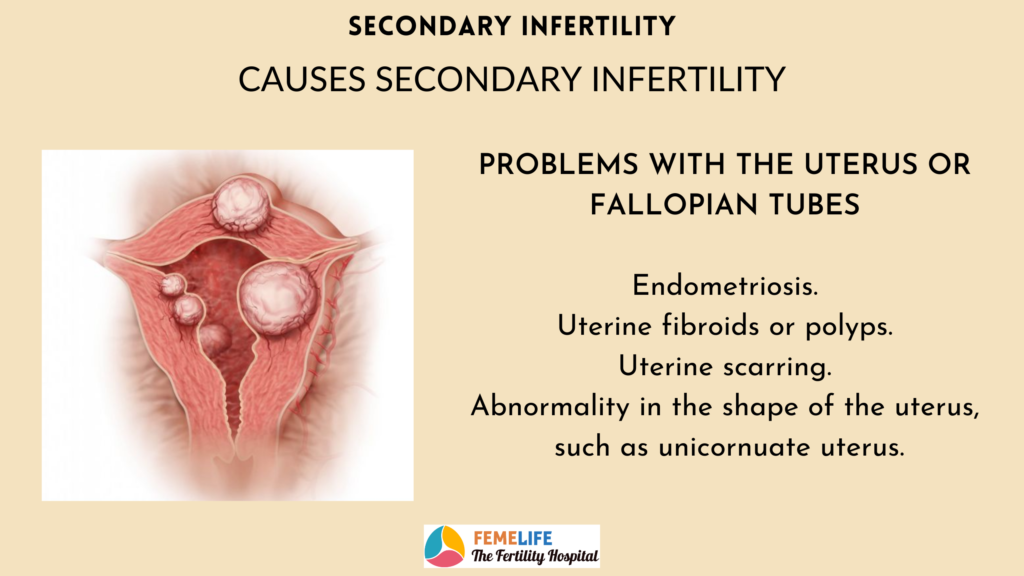What are the causes of secondary infertility in women and people assigned female at birth (AFAB)?
Egg quality, structural difficulties with your uterus, certain health disorders, and lifestyle factors are all causes of secondary infertility in women and adults assigned female at birth (AFAB).
Problems in the quantity or quality of eggs
Women and people with AFAB are born with a limited amount of eggs and are unable to produce fresh eggs. As you become older, the amount of eggs left in your ovaries diminishes, and the remaining eggs are more likely to have chromosomal issues.
Other causes of a low number of good-quality eggs include autoimmune or genetic problems, as well as past surgery or radiation.
Structural issues (like scars or blockages)
Infections and surgery can also harm your fallopian tubes and uterus. A fallopian tube transports an egg to the uterus. Infections such as chlamydia, gonorrhoea, and pelvic inflammatory disease (PID) can cause fallopian tube blockage.
Polycystic ovary syndrome (PCOS)
PCOS is a hormonal disorder characterised by irregular and infrequent menstrual cycles. Most people with PCOS do not ovulate on a regular basis, which can interfere with their ability to conceive.
Endometriosis
Endometriosis is a condition in which tissue that normally grows inside the uterus grows in the ovaries or other regions of the body. While endometriosis is common, not all cases result in infertility.
